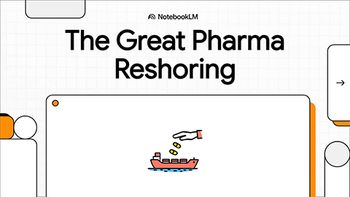
The Payer Value Deficit in Orphan Drugs
Shift focus in orphan and ultra-orphan messaging to clinical benefit.
The value deficit in orphan drugs does not apply to patients or physicians. It applies to payers. The extreme disproportion between the annual cost for orphan and ultra-orphan drugs and medical cost offsets is the payer value deficit.
That extreme disproportion makes the “payer value” argument in brand messaging inherently problematic.
From my experience in discussions with medical and pharmacy directors, there is a broad consensus that health plans see virtually no payer value from particularly ultra-orphan treatments.
As one pharmacy director put it: “You have to treat rare conditions, but these do not return value to the health plan.” This is not to say, “no value;” just no “payer value.” Payer value equates to reduced events, medical cost offsets, and lower health resource utilization.
Since value from treatments for rare disease does not align with payer value, what does? The answer is clinical benefit.
Clinical Benefit Over Payer Value
While health plans would like to see payer value, what they need to see to ensure optimal access is that treatment has clinical benefit.
The stronger the clinical benefit, the weaker the pressure to introduce prior authorization restrictions beyond what might be considered appropriate. Also, the greater the potential for premium pricing to be accommodated without increasing risk of limiting coverage.
The messaging challenge many treatments for orphan and ultra-orphan conditions face is that they are super expensive but not curative. Typically, clinical benefit sits on a continuum at a point best described as “somewhat effective.” Consequently, the payer message around clinical benefit gravitates to quality of life (QoL) terms. For payers, this is weakens the message.
QoL Barrier in Payer Messaging
There are two parts to the barrier QoL poses for payer messaging. First, it is axiomatic that payers have little interest in QoL arguments. A medical director put it this way: “Quality of life is probably a bad term. It can mean anything. I don’t think payers necessarily understand what manufacturers are talking about with QoL.”
Second, it is self-evident that if treatment has some measure of success, QoL improves. What payers want to know are the metrics behind the improvement; numbers behind symptom improvement; numbers behind function improvement; numbers behind physiological improvement; and (if possible) numbers behind a biomarker improvement.
From QoL to Underlying Clinical Benefit
Anterior to the messaging challenge brand teams face with treatments for orphan and ultra-orphan conditions is that the low hanging fruit in biopharma R&D has long been addressed. What remains is extremely complicated. Drawing from interviews for various market research studies, payers are not expecting cures. They know success is incremental and, perhaps most important for manufacturers, they know they have to provide access. What they want to know are the metrics on clinical benefit they are paying for.
Unpack QoL
QoL is everyone’s goal, but for payer messaging to be optimal, brand teams need to unpack morbidity from QoL and repack morbidity in clinical benefit. This means isolating multiple individual slices of morbidity in the orphan condition and providing a number that captures the benefit for each of those endpoints.
The more the total clinical benefit is broken into its constituent parts and presented empirically, the more value payers will see—even if it’s not “payer value.” In addition, if there is competition, potentially, there is a greater competitive advantage.
While validated instruments are essential for demonstrating the impact of an orphan treatment on patients, they are also seen by payers as obtuse because they present composite scores. A strong score on one or two effects, for example, can cover up weak or no benefit in dozens of others.
Since biopharma R&D is well into penetrating a new frontier of breakthrough science targeting once untreatable conditions, brand teams would be well served working with scientific colleagues during trial planning and after to develop next-generation methods for payer messaging to convey the broadest possible number of clinical benefits their treatments produce.
Ira Studin, PhD, is the president of Stellar Managed Care Consulting. He can be reached at [email protected].
Newsletter
Stay ahead in the life sciences industry with Pharmaceutical Commerce, the latest news, trends, and strategies in drug distribution, commercialization, and market access.





